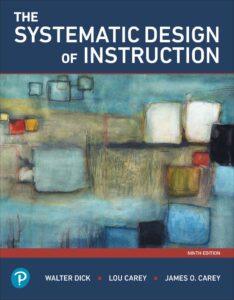By Brant Wilkerson-New
October 21, 2025
Key Takeaways
- Lead with the win, quantify the problem, and validate sources before you publish.
- Keep the format simple: title, summary, problem, solution, results, and a next step.
- Interview more than one role to strengthen your analysis and quotes.
- Use visuals and one table to make data scannable and credible.
- Publish short and long versions so sales and marketing can work with the same case.
Most teams treat proof like a nice-to-have. The top performers treat proof like a product. A strong case study gives busy buyers a way to see themselves in the story, test your claims, and feel confident saying yes.
The goal here is simple. Build case studies that work hard without wasting a line, that show real-world outcomes, and that keep your pipeline moving.
Why Case Studies Still Win Attention
People trust evidence. A polished case with clear data and a human angle answers questions prospects already have. It shortens sales cycles and helps your team stay aligned with real customer outcomes.
A case study can serve many roles. Marketing uses it for email and social. Sales pulls a quote during discovery. Product studies feed lessons back into the roadmap. Even new hires and students learn faster by reading a well-built study.
You don’t need a library of fifty. One or two exceptional examples in each segment often outperforms a stack of forgettable PDFs.
What a Strong Case Study Really Does
- Confirms the problem is real and costly
- Shows the decision path and the options weighed
- Ties actions to results with clear metrics
- Lets prospects imagine the same result for their team
This kind of study is not just a story. It is a structured argument in the shape of a narrative. When done right, it feels like an easy read and an easy decision.
Three roles every case should cover
- Context: Who the customer is and why the challenge mattered.
- Action: What was tried, compared with other routes that were considered.
- Outcome: Results that match the buyer’s priorities.
Keep these roles in mind as you write the first draft and again when you edit for clarity.
Anatomy of a High-Performing Case
Think like a newsroom. Start with clarity and cut everything that slows the reader.
- Title and summary: The fast facts in two lines.
- Client background: Industry, size, a quick qualifier.
- Problem: The pain in measurable terms.
- Solution: What you implemented and how.
- Results: Quantified outcomes and quotes.
- Proof: Methods, timeframes, and the source of the data.
- Visuals: A chart, an icon for the key stat, and a photo if allowed.
- Next step: A short CTA that points to contact information or a demo.
Use an introduction that orients the reader and sets the stakes. Then move to the main moments of the case. Every section should earn its spot.
You don’t need a novel. Most readers scan, so front-load value. You don t want to hide the win in paragraph six.
Step-by-Step Guide: from Notes to Publishing
The process of writing a case can feel fuzzy until you pin down a sequence that always works. Try this approach and adapt it to your team.
1) Identify the right customer and angle
- Choose a customer your ideal buyer relates to.
- Confirm permission early.
- Identify one clear outcome to anchor the study, even if there are many wins.
Different audiences care about different results. Finance may care about cost reductions, operations about cycle time. Select the angle that matches your segment.
2) Prep your research and interview plan
Gather background information before you schedule interviews. Sales notes, CRM fields, usage data, support tickets, and public articles all help you ask sharper questions.
Aim to speak with a small group of people involved in the decision: an executive sponsor, a practitioner, and sometimes an admin. One conversation gives color. Two or three confirm details you would otherwise guess.
3) Run interviews that give you usable quotes
- Start with easy wins: role, responsibilities, and the original trigger for change.
- Quantify the problem. Ask for baselines and timeframes.
- Map the alternatives they tried or considered.
- Walk through your solution step by step.
- Close with results and what surprised them.
Record with consent. Paraphrase back to confirm numbers and phrasing. This reduces rework in the last draft.
4) Draft the narrative in tight layers
Start with a two-paragraph outline. Expand it to a one-page draft. Only then go long. This keeps the study focused and fast.
Write for scanners first:
- A headline that states the win
- A summary box with one or two metrics
- Short subheads that tell the story even without reading
5) Validate data and approvals
Send the draft to your champion with tracked changes. Be clear about deadlines. Double-check every number against internal systems and signed-off emails.
Format that Helps the Reader
Structure matters. The right format helps the reader find the win in ten seconds, then invites a deeper read.
- Keep sentences short and active.
- Use descriptive subheads, not clever ones.
- Place the key metric near the top.
- Add a pull quote that sounds human, not like marketing copy.
- End with a small “What’s next” nudge.
Add a sidebar with extra information when the case has technical steps, compliance notes, or industry-specific details. That way the flow stays clean while experts still get the depth they want.
Metrics that Matter
Not every number impresses. Tie results to business priorities that buyers recognize.
- Time to value
- Cost saved or avoided
- Revenue created
- Risk reduced
- Satisfaction improvements
If you track intermediate improvements, connect them to business results. For example, “A 25 percent lift in first-contact resolution led to a 12 percent drop in churn.”
Research that Keeps you Honest
Good studies come from good research. Interview multiple roles when possible. Scan usage logs, tickets, and renewals. Pull quotes from sales calls and internal emails with permission.
Three quick tips:
- Avoid jargon unless your reader uses it daily.
- Don’t rely on memory. Confirm dates and numbers right away.
- Keep source information organized in a simple folder or doc so future edits stay easy.
If you serve regulated industries or public agencies, your study might read like a report. That is fine. Clarity and accuracy still come first.
Techniques that Hook Readers
You can write a case in a way that feels like a story without turning it into fiction. These cues help.
- Lead with the outcome: “Cut audit prep from 3 weeks to 4 days”
- Use one main character: “Ava, the VP of Ops”
- Show stakes: “Every extra day delayed shipments and penalties added up”
- Keep verbs strong: “cut, shipped, launched, doubled”
Writing a case is also about what you leave out. Lose long product lists and deep configuration details when they slow the pace. Save them for a technical appendix.
When you write a case that feels crisp, buyers stick with it. When it drags, they bounce.
How long should your case study be
Most teams publish two versions:
- A one-page study for outreach and sales decks
- A longer study with more context for the website
Shorter studies win attention; longer ones carry late-stage deals. Start small, then expand if feedback asks for more detail.
Make Data Believable
Numbers need context. Show the baseline, the timeframe, and how you measured.
Try this simple frame:
- Baseline: “Customer success handled 1,200 tickets a week”
- Action: “Rolled out workflow automation to triage and route”
- Measurement: “Tracked in Zendesk over 90 days”
- Results: “Reduced backlog 47 percent and response time 32 percent”
Add one table that ties each claim to a source. It speeds approvals and boosts trust.
| Section | Key claim or metric | Source | Owner |
| Summary | 47 percent backlog reduction | Zendesk dashboard export | Ops Lead |
| Problem | 1,200 tickets per week baseline | Support weekly report | CS Manager |
| Solution | Automation rules deployed in 2 days | Change log | IT Admin |
| Outcome | 32 percent faster response time | SLA report | QA Analyst |
Use one small chart or an icon to make the hero metric stand out on the page. Visuals help quick readers see the win, then decide whether to keep going.
The Problem Statement: Make it Specific
General claims go nowhere. Quantify the pain, the risks, and the limits of old solutions.
- What was broken or slow
- Who felt the pain
- What it cost in time, money, or risk
- What had already been tried
A specific problem paired with a clear outcome makes the case stick. Vague inputs lead to soft claims.
The Solution: Clear, not Technical for its Own Sake
Explain only what the reader needs to connect actions to outcomes. Skip depth that pulls attention away from why the solution worked.
- Name the product or approach
- Note the key steps in plain language
- Call out any partner services that mattered
- Keep internal jargon out unless your audience uses it
If the audience is technical, create a companion piece that covers setup, integration, scaling, etc. Link to it from the case without bloating the study.
Results that Earn Trust
Results land when they map to buyer priorities and are easy to pass along to a stakeholder who was not in the meeting.
- Tie results to a timeframe and a baseline
- Include a human quote that confirms the change felt real
- Show one or two visuals that are simple and honest
- Avoid round numbers that look made up unless they are audited
Results deserve space. Place them near the top, then expand with context in the body.
Approvals without Drag
Many strong drafts stall here. Clear process saves time.
- Send the draft with a checklist of items to approve
- Offer suggested quotes and let them edit in their voice
- Mark any sensitive information that can be redacted
- Set a date for approval and a fallback plan
If legal review is required, prefill a template and attach sources. This keeps rounds short.
Publish in Multiple Formats
Meet buyers where they spend time.
- Web page for easy sharing and SEO
- One-page PDF for email and events
- Slide version for sales conversations
- Short clips for social and paid campaigns
Track performance by segment. Learn which studies move deals forward and build more in that pattern.
Examples that Exhibit Clarity
A short example, aimed at a procurement leader:
- Problem: “RFP cycles took 12 weeks on average and contract errors triggered 3 percent rework.”
- Solution: “Implemented template library and approval routing for legal.”
- Results: “Cycle time dropped to 7 weeks; rework fell to 0.4 percent.”
A different example, aimed at an engineering leader:
- Problem: “Deployments failed 14 percent of the time and rollbacks caused overtime.”
- Solution: “Adopted blue-green deploys and automated tests.”
- Results: “Failure rate down to 1.7 percent; weekend work nearly eliminated.”
Notice how the language matches the audience. This makes the study easier to pass around inside a company.
Common Pitfalls and how to Avoid them
Too much product, too little problem: Buyers need to feel the pain first.
- Vanity metrics: Pick numbers that connect to outcomes leaders care about.
- Overlong quotes: Edit for punch while keeping the voice.
- Weak visuals: One clear chart beats a busy dashboard screenshot.
- Missing sources: Keep the source list handy for future updates.
FAQs that Keep Teams Aligned
How many studies do we need? Start with one per core segment and expand from there.
- Who should approve? Your customer champion, one practitioner, and their legal if needed.
- How long should a case run? Refresh data and quotes yearly or when the product changes.
How to Write like a Pro when Time is Tight
Here’s a quick system you can use tomorrow:
- Block 60 minutes with your champion
- Record the call and capture timestamps when you hear numbers
- Write the headline and summary while it’s fresh
- Draft the body in three sections: problem, solution, outcome
- Send a tight edit with suggested quotes and source links
This keeps the study moving and saves everyone time.
Style, Tone and Voice Guidelines
Write to one reader: a specific role with a clear goal
- Keep paragraphs short and varied
- Use active voice and strong verbs
- Cut filler and remove repeated claims
- Edit names, titles, and numbers with care
If your audience is technical, add a brief technical section or a linked appendix. Separate what prospects need to decide from what admins need to implement.
Template you can Copy
- Title: Outcome in one line
- Summary: Company, industry, key metrics
- Background: Who they are
- Problem: Quantified pain with stakes
- Solution: What changed and how
- Results: Numbers with timeframes and quotes
- Proof: Data sources, methods, and dates
- Next step: Contact information or a way to try
This template covers most types of case you will publish. Adjust length and emphasis based on audience.
Special Cases: Regulated and Complex Environments
Some buyers require deeper detail. That does not mean the study has to be hard to read.
- Split the content into a plain-language overview and a technical appendix
- Include compliance notes and controls in a labeled section
- Use a timeline when the rollout spans quarters or years
This keeps the surface clear while allowing deeper analysis for auditors and experts.
Editing Checklist
- Problem stated early and quantified
- Results at the top and repeated in the close
- Quotes sound human and specific
- Numbers have timeframes and sources
- Visuals simple and labeled
- CTA present and relevant to the reader
- All sensitive information approved
Run this checklist every time. Your studies will stay tight and trustworthy.
When to Retire or Refresh a Case
Retire a case when the product or pricing changed in a way that shifts outcomes. Refresh when you have new data or a better quote. Archive old versions but keep the source files so updates stay easy.
If a study is driving pipeline, keep it live and add a short editor’s note with fresh numbers.
How to Coach Contributors
Sales and customer success often spot great candidates. Make it easy for them.
- Share a one-page guide on what a good candidate looks like
- Give them two short emails they can send to customers
- Offer to join calls and handle the writing
- Celebrate wins internally so the habit spreads
Small systems create a steady flow of raw material for strong studies.
A Note for Early-Stage Teams
If you have limited data, keep things honest and focused. Use specific process improvements and time saved while you build toward larger outcomes. Even a small, verified result can open doors.
Early teams usually get more value from one focused case that is tightly aligned with their ICP than from a dozen general pieces.
Why this approach Improves Sales Conversations
Great case studies pre-answer objections. They build familiarity with your process, offer proof that your team delivers, and give champions materials they can share inside their company.
When sales teams walk into calls with a relevant case, discovery gets sharper. Prospects ask richer questions. The path to a signed order feels shorter and more natural.
SEO and Distribution Tips
- Embed the study on your site with clean markup
- Add structured data where appropriate
- Publish short clips and quotes on social
- Send the study in a follow-up after discovery calls
- Include it in nurture emails for related segments
Good distribution multiplies the effort you put into writing.
A Quick Point on Ethics
Accuracy builds brand equity. Get permission, cite sources, and protect sensitive information. If an outcome is not yet verified, be transparent about the timeframe and current status.
Satisfied customers trust you more when you protect their story. Prospects will too.
At TimelyText, our technical writing services help you turn customer success stories into powerful sales tools. We can draft outlines from your notes, interview your clients, perform detailed analysis, and deliver publication-ready case studies your team can share with confidence.
Reach out today to request technical writing support, and we’ll start with a free scoping call to learn about your goals.
- About the Author
- Latest Posts
I’m a storyteller!
Exactly how I’ve told stories has changed through the years, going from writing college basketball analysis in the pages of a newspaper to now, telling the stories of the people of TimelyText. Nowadays, that means helping a talented technical writer land a new gig by laying out their skills, or even a quick blog post about a neat project one of our instructional designers is finishing in pharma.





